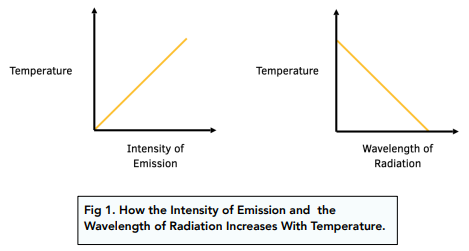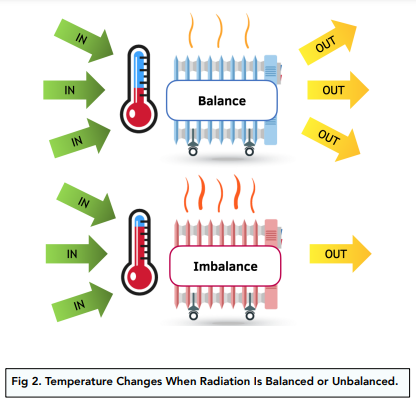Radiation and Temperature (GCSE Physics)
Radiation and Temperature
Emission of Radiation
- All objects emit radiation. As we discussed previously, all objects will emit radiation, not just black bodies. However, the temperature of an object can hugely determine the amount of radiation that an object releases.
Emission and Temperature
- Temperature can affect emission. The higher the temperature of an object, the more radiation it will emit in a certain time. This can also affect the intensity and the wavelength of radiation emitted, as we will see next.
- Intensity and wavelength can be affected. As the temperature increases, the intensity of the emission will also increase. This is a directly proportional relationship. However, as the temperature increases, the wavelength of the radiation will decrease (i.e. get shorter). This means that the temperature and wavelength will hare an indirectly proportional relationship.

Increasing Temperature
- Radiation is balanced at a constant temperature. When an object is kept at a constant temperature, the amount of radiation being absorbed will be equal to the amount of radiation being emitted. This is known as a balance.
- When radiation is unbalanced, object temperature rises. However, there may be some cases where the radiation is not balanced. For example, when the temperature of an object rises, this means that the object must be absorbing more radiation than it is emitting.

Temperature of Objects
- Temperature is related to radiation. We now know that the temperature of an object is positively related to radiation. As the temperature of an object increases, the more radiation it will emit.
- The temperature of the Earth is affected by several factors. Since the temperature of the Earth is also controlled by the balance of radiation, this will also be affected by several factors. We will explore these in the next section.





Still got a question? Leave a comment
Leave a comment